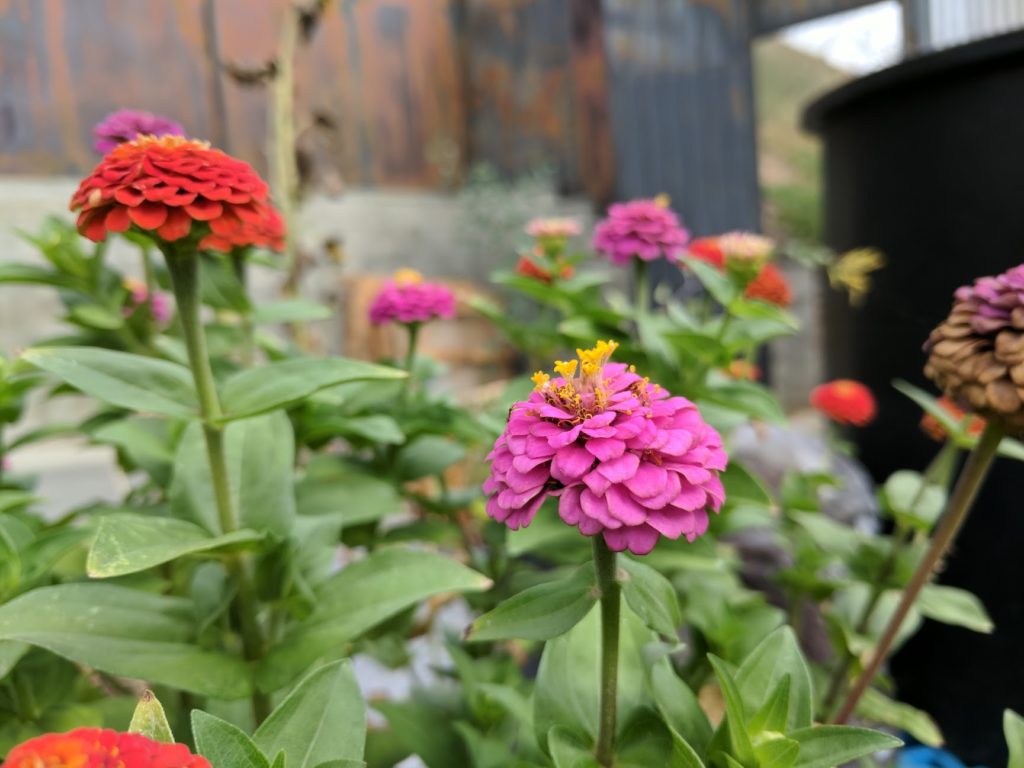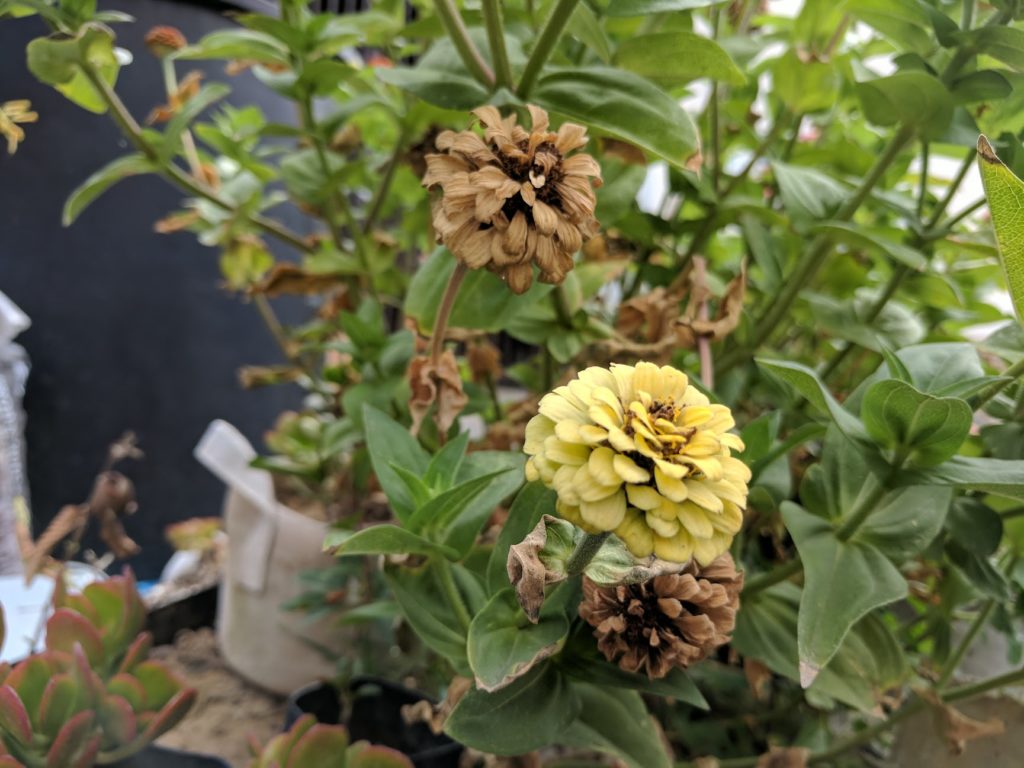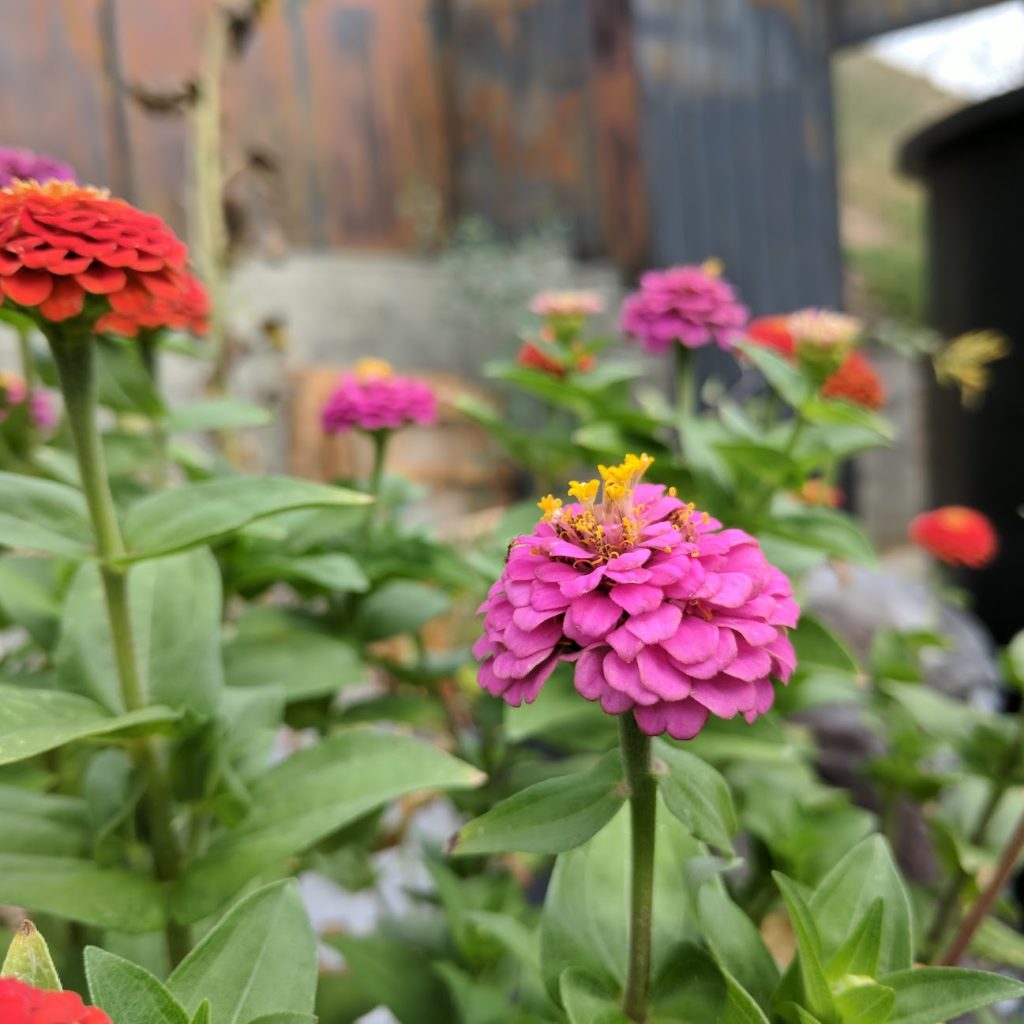Zinnias are annual flowering plants that belong to the Asteraceae family. They are native to Mexico and Central America, and they have been cultivated for centuries for their colorful, showy flowers.

There are many different species and cultivars of zinnias, which come in a wide range of colors, including shades of red, orange, yellow, pink, purple, and white. Zinnias have a long blooming season, and they are popular garden plants because they are easy to grow and care for.

In terms of cultivation, zinnias are relatively easy to grow and are well suited to most climates. They prefer well-drained, fertile soil and full sun exposure, and they should be watered regularly to keep the soil moist. Zinnias can be grown from seeds or transplants, and they can be grown in a variety of settings, including gardens, containers, and hanging baskets.

In addition to their beauty, zinnias have a number of potential benefits. They are known to attract pollinators, such as bees and butterflies, which can help to support local ecosystems. Some people also use zinnias in herbal remedies, although there is limited scientific evidence to support their use for medicinal purposes.

Zinnias have a long history of cultivation and have been grown in gardens for centuries. They were first introduced to Europe in the early 18th century, and they quickly became popular garden plants. Today, zinnias are widely cultivated around the world and are popular choices for home gardens, public gardens, and landscaping projects.

In conclusion, zinnias are annual flowering plants that are known for their colorful, showy flowers. They are easy to grow and care for, and they have a long blooming season. In addition to their beauty, zinnias have the potential to attract pollinators and have been used in herbal remedies. They have a long history of cultivation and are widely grown around the world.

